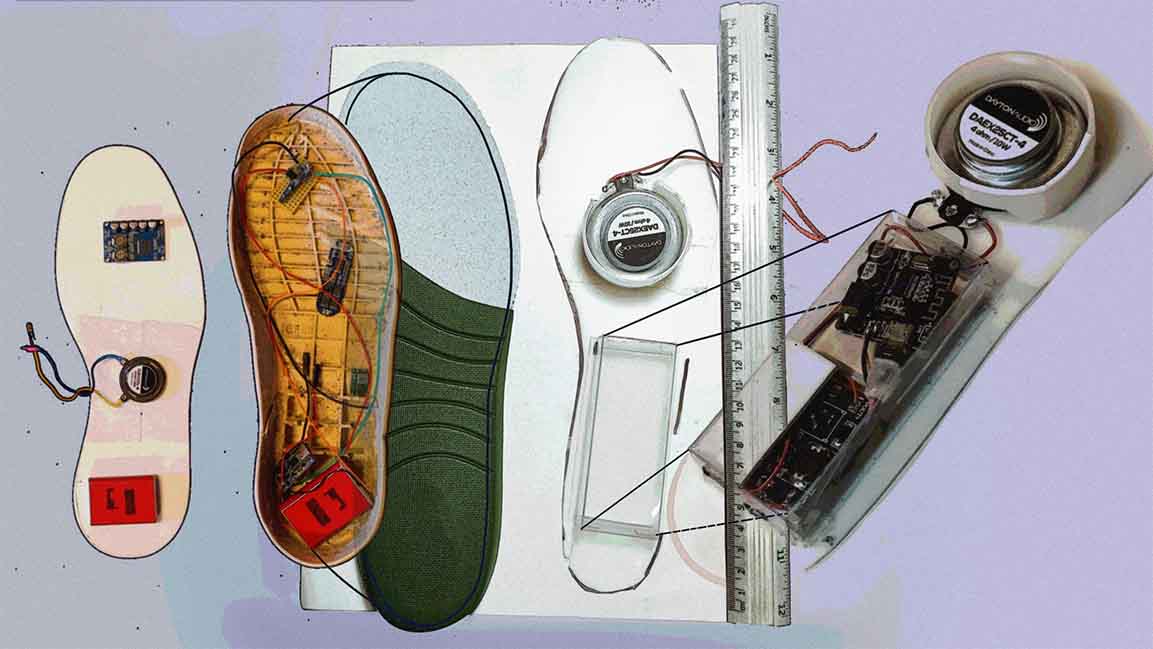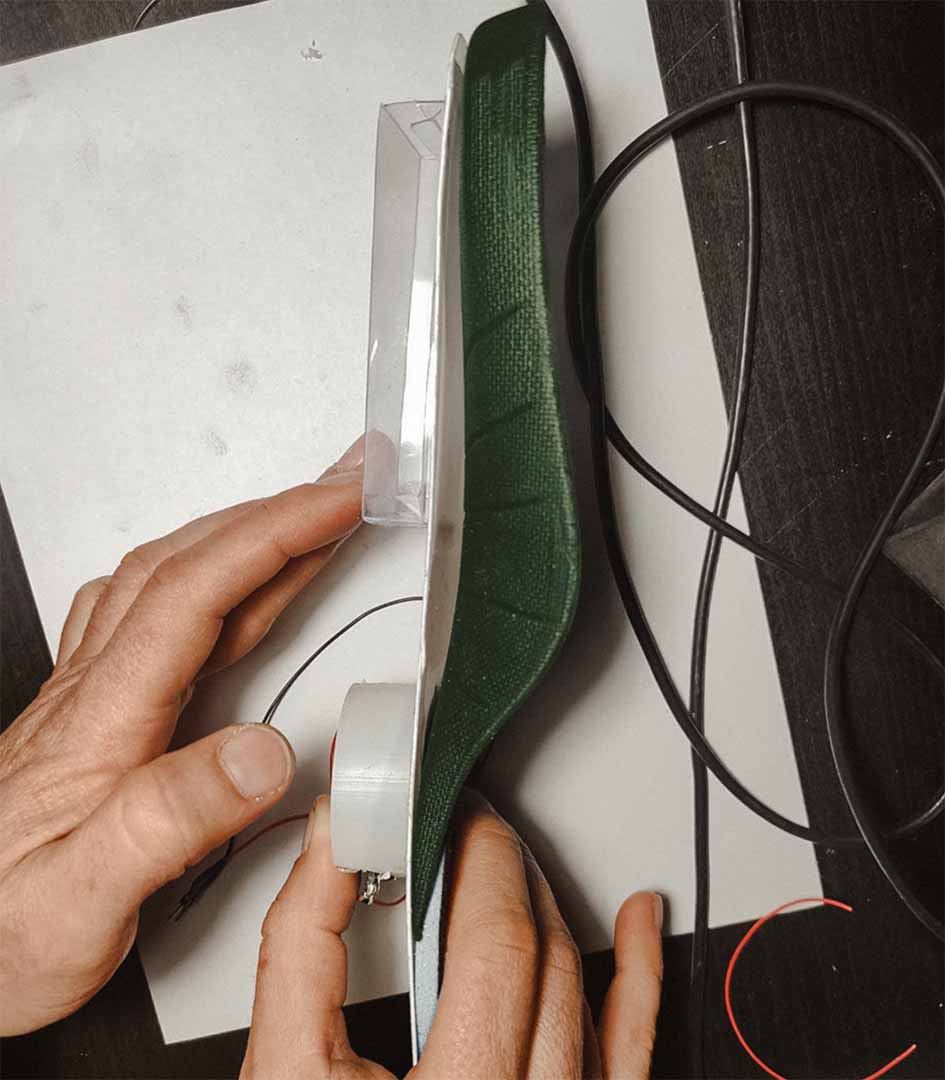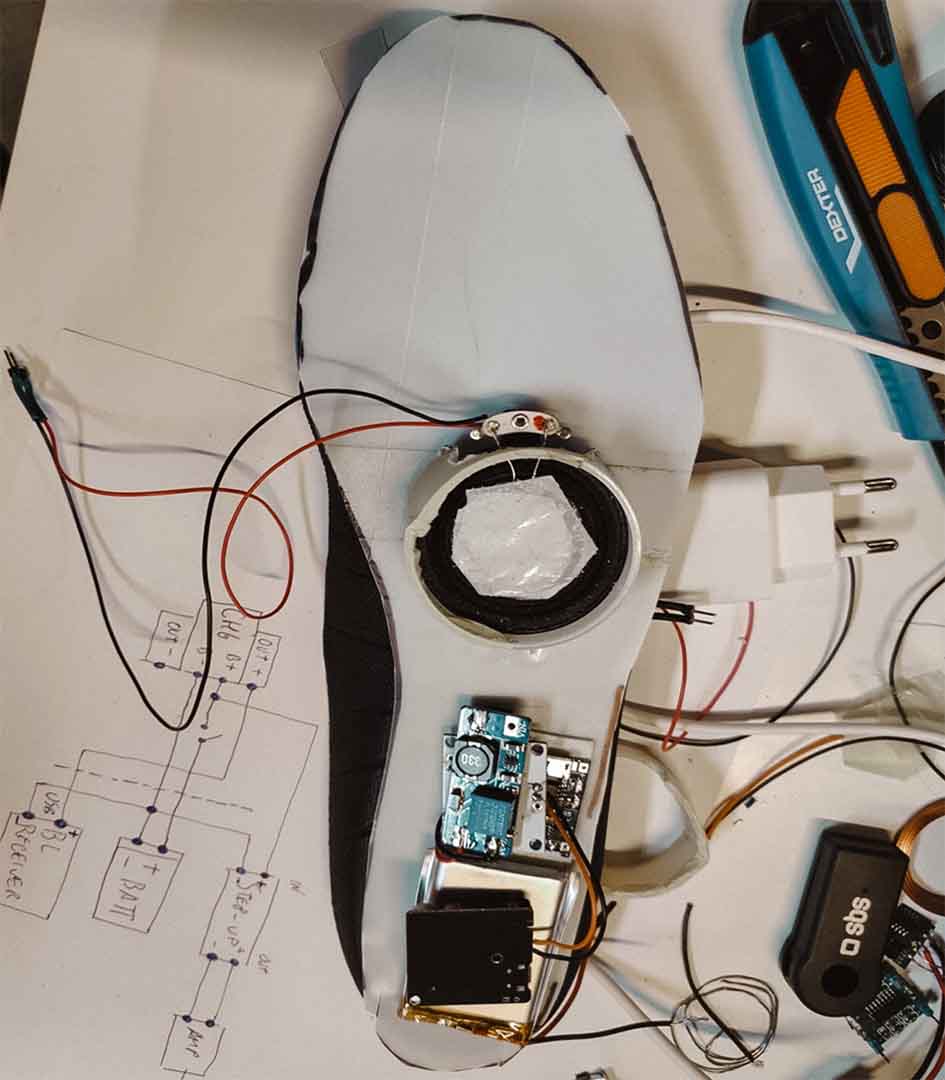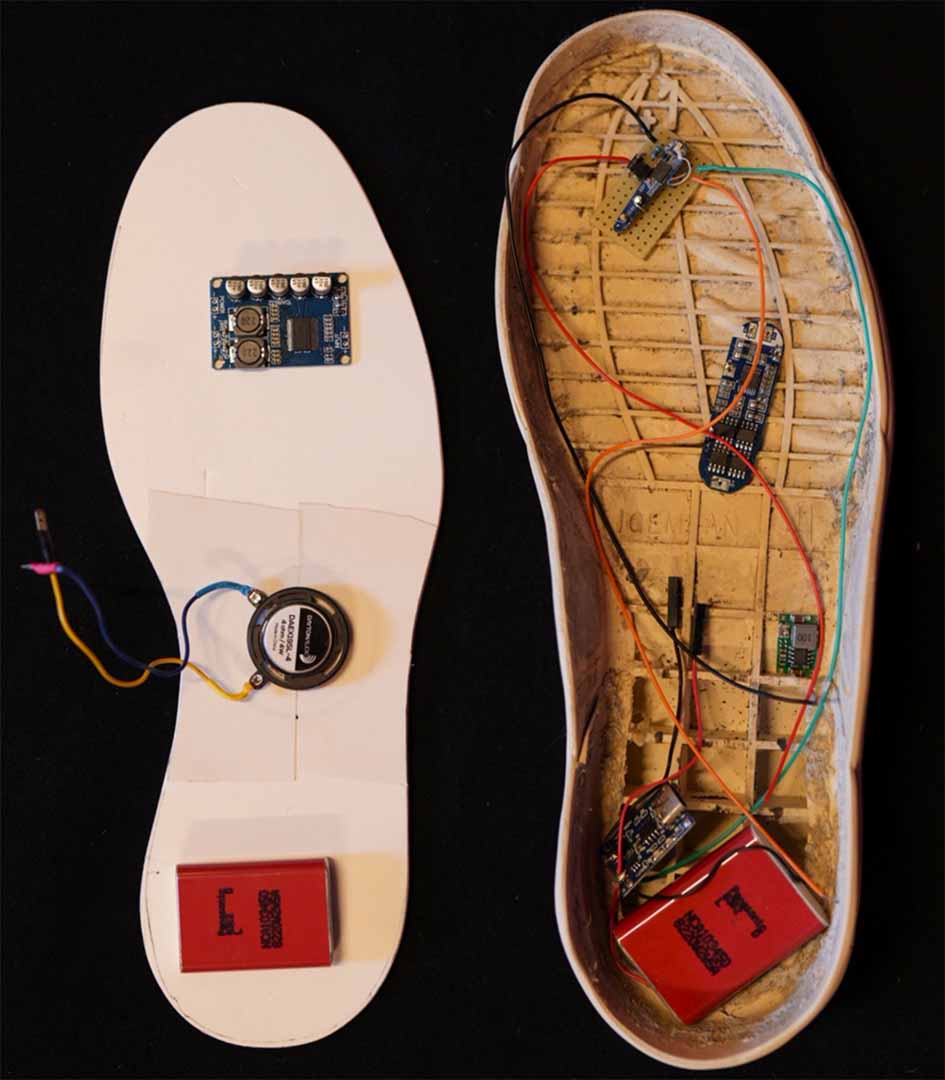- | 8:30 am
This device gives the hearing impaired a chance to feel the rhythm
The design-centric device, which translates music into vibrations, can be best described as headphones for the feet.

On a stage with prominent booming speakers, a group of dancers stuns an audience with perfect coordination without missing a beat. As the music grows suspenseful, the dancers change their expressions and dawn a look of mystery. It’s hard to believe no dancer can hear the music grow louder because every dancer is hard of hearing. This is how hearing-impaired dance troupes such as Egypt’s Silent Troupe perform. They rely on feeling the vibrations of the speakers through their feet.
Enter Sole Music, a smart insole, enables an experience of music based on vibrations, partly inspired by the troupe’s challenge.
Developed by MENA’s entertainment and music platform, Anghami, in partnership with agency ‿ and us, the insole can be best described as headphones for the feet.
“While the Middle East’s music industry is at the forefront of inclusivity, the deaf community has largely been overlooked,” says Steve de Lange, Executive Creative Director at ‿ and us.
CAPTURING THE SOUL OF MUSIC
According to the WHO, 5% of the world’s population lives with hearing loss: that’s more than 360 million people. Saudi Arabia has the highest recorded number of hearing-impaired people in the Arab world, with 720,000, while Jordan has 40,000.
Designed on the premise that the foot is extremely receptive to vibrations, given the network of nerve endings located there, this insole is Bluetooth-enabled.

Pic Courtesy: ‿ and us
The research and development phase, which lasted 18 months, involved a lot of conversation with the hearing-impaired community, which led to fine-tuning the conceptualization of the insole. “We discovered that many hearing-impaired individuals enjoy music via tactile touch, placing their hands or feet near speakers to feel the music,” says de Lange.
Perhaps the only drawback of music playing at very high volumes on speakers is that the experience remains limited.
“We wanted to give the deaf community an easier, hands-on music experience,” he adds.
THE HEART OF THE SOLE

Pic Courtesy: ‿ and us
Materials play a key role in product design when designing a part of the shoe that lends itself to wear and tear. “Our primary challenge was sourcing components that were both robust enough to weather the prolonged concussive impact of walking, dancing, and running as well as being small enough to fit into the very slender profile of an insole,” says de Lange.
The team conceptualized an efficient design of the sole, comprising two basic parts, the housing layer – which features a silicon orthopedic cup that facilitates the transfer of vibrations throughout the entirety of the sole of one’s foot, and the core technology consisting only of a battery, a Bluetooth connector, and a transducer which translates soundwaves into vibrations.
The deceptively simple design makes it stand out. The topmost layer consists of a high resonance fiber weave that conducts vibration.
Yet the heart of the insole is its built-in transducer that transforms soundwaves into polyphonic vibrations, enabling users to feel every note of music.
The device can be charged via a standard USB-C port with a battery life of four hours on a single charge.

Pic Courtesy: ‿ and us
Unlike normal insoles, the internal components of Sole Music are protected by a layer of polypropylene that makes the device water-resistant.
While still gauging interest in the device, de Lange says the commitment is to make music “accessible and affordable” for as many as possible.





































